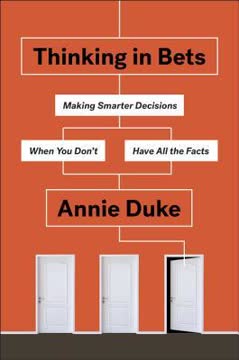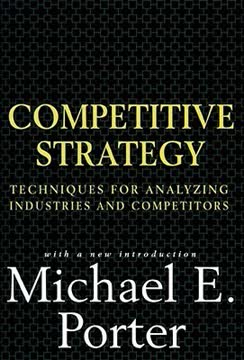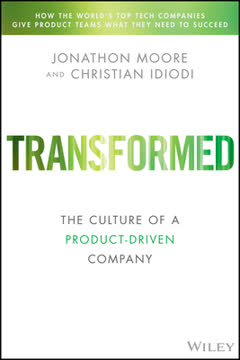重点摘要
1. 战略是关于做出赢的选择
战略是一套综合的选择,使公司在其行业中独特定位,从而相对于竞争对手创造可持续的优势和卓越的价值。
明确的选择。 战略需要明确选择做什么和不做什么。这不仅仅是拥有一个愿景或计划,遵循最佳实践,或简单地优化当前运营。战略涉及选择一组特定的活动,这些活动将为客户提供独特的价值,并创造可持续的竞争优势。
赢的焦点。 战略的最终目标是在市场上获胜。这意味着持续地为客户提供比竞争对手更好的价值。赢应该是任何战略的核心,驱动艰难的选择和大量的投资。那些仅仅旨在参与而不是赢的公司,往往无法做出必要的选择和投资以取得成功。
综合方法。 成功的战略由五个相互关联的选择组成:
- 赢的愿望
- 选择战场
- 如何取胜
- 核心能力
- 管理系统
这些选择必须协调一致并相互强化,以创建一个推动竞争优势的连贯战略。
2. 明确定义你的赢的愿望
重要的是赢。伟大的组织——无论是公司、非营利组织、政治组织、机构等——选择赢而不仅仅是参与。
雄心勃勃的目标。 赢的愿望不仅仅是参与市场。它以明确、雄心勃勃的术语定义了对组织来说赢的样子。这可能意味着成为行业领导者,变革一个行业,或以独特的方式为客户创造显著价值。
以客户为中心的焦点。 赢的愿望应围绕客户及其需求,而不是内部指标或财务目标。例如,宝洁公司将赢定义为通过其产品改善消费者的生活,这推动了整个组织的创新和客户关注。
指导原则。 一个明确的赢的愿望是所有其他战略选择的北极星。它帮助对齐组织,并提供一个基准来评估选项和做出艰难的决定。没有一个明确的赢的愿望,公司可能会满足于平庸或做出不一致的战略选择。
3. 选择战场和如何取胜
战略的核心是回答两个基本问题:你将在哪里竞争,以及你将如何在那儿取胜?
选择战场。 这个选择定义了公司的具体竞争领域。它包括关于以下方面的决策:
- 服务哪些地理市场
- 目标哪些客户群体
- 提供哪些类别或产品线
- 使用哪些渠道
- 参与价值链的哪些阶段
如何取胜。 这个选择概述了公司将在其选择的竞争领域中取得成功的独特方法。有两种基本的取胜方式:
- 成本领先:以比竞争对手更低的成本提供类似的价值
- 差异化:提供客户愿意为之支付溢价的独特价值
相互强化的选择。 选择战场和如何取胜的选择必须相互强化。公司的取胜方法应针对其特定的竞争领域,利用其优势并以竞争对手难以匹敌的方式满足客户需求。
4. 发展和利用核心能力
组织的核心能力是那些在最高水平上执行时,使组织能够实现其选择战场和如何取胜选择的活动。
识别关键活动。 核心能力是使公司能够实现其选择战场和如何取胜选择的基本活动。这些不是通用的优势,而是特定的能力,在所选择的市场中创造竞争优势。
建立活动系统。 最强大的核心能力作为一套相互强化的活动系统运作。这创造了一个竞争对手难以复制的优势,因为优势来自多个能力的相互作用,而不是任何单一因素。
战略性投资。 一旦识别出核心能力,组织应不成比例地投资于发展和维护它们。这可能包括:
- 培训和发展计划
- 专门的资源和团队
- 专业技术或流程
- 填补能力空白的合作伙伴关系或收购
5. 实施支持性管理系统
没有支持性的结构、系统和措施,战略只是一个愿望清单,一组可能永远无法实现的目标。
对齐流程。 管理系统应设计为支持和强化战略选择。这包括以下方面的流程:
- 战略创建和审查
- 资源分配
- 绩效衡量
- 激励结构
- 沟通和决策
培养战略思维。 实施系统,鼓励整个组织的持续战略对话。这可能包括定期的战略审查、跨职能合作,或在各个层面建立战略能力的培训计划。
衡量重要事项。 开发与战略对齐的具体、可衡量的结果。这些指标应涵盖财务、客户和运营维度,以提供战略进展的整体视图。定期审查和调整这些措施,以确保它们继续推动正确的行为和结果。
6. 使用战略逻辑流程进行分析
要做出好的选择,你需要理解环境的复杂性。战略逻辑流程可以指引你进行必要的关键领域分析,以产生可持续的竞争优势。
结构化方法。 战略逻辑流程提供了一个框架,用于分析影响战略选择的关键因素。它由四个主要领域组成:
- 行业分析
- 客户分析
- 相对位置分析
- 竞争分析
迭代过程。 虽然流程通常从左到右移动,但战略开发不是一个线性过程。在一个领域获得的见解可能需要重新审视早期的假设或分析。
关注关键问题。 逻辑流程有助于优先考虑最关键的问题和分析,而不是试图一次性分析所有内容。这种有针对性的方法节省了时间和资源,同时确保考虑到最重要的因素。
7. 逆向工程可能性以做出战略选择
与其让个人自己找到答案然后争论,这种方法使团队能够共同发现最强的选项。
协作过程。 逆向工程方法将战略讨论从预设想法的倡导转变为对可能性的协作探索。这减少了冲突,并导致更强的战略和更强的认同感。
关键步骤:
- 框定选择
- 生成战略可能性
- 指定成功条件
- 识别选择障碍
- 设计和进行测试
- 做出选择
关注“必须为真”。 团队不是争论什么是真实的,而是探索每种可能性成功所需的条件。这重新框定了讨论,并以建设性的方式揭示了关键假设和关注点。
8. 避免常见的战略陷阱并识别赢的迹象
没有完美的战略——没有算法可以保证在特定行业或业务中的可持续竞争优势。但有一些信号表明公司有一个特别令人担忧的战略。
避免的战略陷阱:
- 全做战略:未能做出选择
- 堂吉诃德战略:正面攻击最强的竞争对手
- 滑铁卢战略:同时在太多战线上作战
- 面面俱到战略:试图同时服务所有细分市场
- 永远不会实现的梦想战略:没有具体选择的愿望
- 每月一个计划战略:追求通用的行业战略
赢的战略迹象:
- 独特的活动系统
- 热情的客户和明确的非客户
- 有利可图的竞争对手
- 用于再投资的优越资源
- 竞争对手互相攻击,而不是你
- 客户向你寻求创新
9. 战略是一个持续适应的过程
所有公司都需要不断发展其战略——以改进、锐化和改变以保持竞争力,并最终年复一年地赢。
持续改进。 战略不是一次性的练习,而是一个不断改进和适应的过程。定期重新审视和挑战战略假设,以确保它们在不断变化的市场条件下仍然有效。
主动方法。 最好的公司在财务结果开始下降之前就会调整其战略。他们使用领先指标和市场洞察来及早识别变化并相应调整方向。
平衡稳定性和灵活性。 虽然战略方向的一致性很重要,但在必要时要准备好做出大胆的改变。创建一个既重视战略纪律又重视在竞争环境变化时创新和转变的文化。
最后更新日期:
FAQ
What's Playing to Win about?
- Focus on Strategy: Playing to Win by A.G. Lafley and Roger L. Martin is a guide on developing effective business strategies through specific choices to win in the marketplace.
- Strategic Framework: It introduces a strategic choice cascade, including five essential choices: winning aspiration, where to play, how to win, core capabilities, and management systems.
- Real-World Application: The book uses Procter & Gamble's transformation as a case study to illustrate the application of these strategic principles.
Why should I read Playing to Win?
- Practical Insights: The book offers actionable insights and frameworks applicable across various industries, demystifying the strategy-making process.
- Proven Success: It shares experiences from P&G, demonstrating how strategic choices led to significant growth, providing real-world examples of successful strategy implementation.
- Enhance Strategic Thinking: Readers will develop a deeper understanding of strategic thinking and decision-making, crucial for driving growth and competitive advantage.
What are the key takeaways of Playing to Win?
- Strategy is Choice: Strategy involves making specific choices to win in the marketplace, focusing on what to prioritize and what to avoid.
- Five Essential Choices: The strategic choice cascade includes winning aspiration, where to play, how to win, core capabilities, and management systems, all interconnected for a coherent strategy.
- Iterative Process: Strategy development is iterative, requiring revisiting and refining choices as new insights emerge, helping organizations adapt to changing conditions.
What is the strategic choice cascade in Playing to Win?
- Five Key Components: It consists of winning aspiration, where to play, how to win, core capabilities, and management systems, each building on the others.
- Integrated Framework: These choices are interconnected and should reinforce one another, ensuring alignment with the overall strategy.
- Guiding Decision-Making: The cascade guides leaders in making informed decisions about resource allocation, market entry, and competitive positioning.
How do the authors define winning in Playing to Win?
- Winning Aspiration: Winning is defined as having a clear and compelling aspiration that guides the organization’s strategy, focusing on creating value for consumers.
- Consumer-Centric Focus: It involves understanding and meeting consumer needs better than competitors, prioritizing consumer insights in strategic choices.
- Long-Term Perspective: Winning involves building sustainable competitive advantages for long-term success, requiring ongoing investment in capabilities and innovation.
What is the importance of "where to play" in Playing to Win?
- Defining the Playing Field: "Where to play" refers to the specific markets, segments, and geographies where an organization chooses to compete.
- Strategic Focus: Organizations should concentrate on the most attractive opportunities, allowing for deeper engagement with target consumers and better resource allocation.
- Interconnected Choices: This choice must align with the "how to win" strategy to create a coherent approach, informing competitive tactics.
How does Playing to Win suggest organizations should approach competition?
- Understand Competitors: Organizations should analyze competitors thoroughly, identifying strengths and weaknesses to craft strategies leveraging competitive advantages.
- Choose Unique Value Propositions: Differentiation through unique value propositions, such as innovation or superior service, is crucial.
- Avoid Head-On Battles: Companies should avoid direct confrontations with dominant competitors unless they have a clear advantage, seeking less contested areas instead.
What are the core capabilities discussed in Playing to Win?
- Consumer Understanding: A key capability is understanding consumer needs and preferences, driving effective product development and marketing strategies.
- Brand Building: Strong brand-building capabilities create consumer loyalty and differentiate products, leading to a competitive edge.
- Innovation and Go-to-Market Ability: Organizations must excel in innovation and go-to-market strategies to sustain competitive advantage.
What does Playing to Win say about management systems?
- Support Strategic Choices: Management systems should enable effective implementation of strategic choices, supporting necessary capabilities.
- Measure Progress: They include metrics and performance indicators to track progress toward strategic goals, allowing for strategy adjustments.
- Foster Alignment: Management systems ensure alignment across the organization, helping all teams work toward the same strategic objectives.
What is the strategy logic flow mentioned in Playing to Win?
- Analytical Framework: The strategy logic flow guides organizations in assessing their strategic context through industry analysis, customer value analysis, relative position, and competitive analysis.
- Seven Key Questions: It poses seven questions to explore current reality and identify strategic choices, encouraging thorough analysis.
- Holistic Understanding: The logic flow ensures all relevant factors are considered, fostering creativity in strategy development.
What is the reverse-engineering process in Playing to Win?
- Strategic Exploration: This process explores strategic possibilities by asking what must be true for a given option to succeed, encouraging critical thinking.
- Seven Steps: It includes framing the choice, generating possibilities, specifying conditions, identifying barriers, designing tests, conducting tests, and choosing the best option.
- Collaboration and Buy-In: The process fosters collaboration and buy-in, transforming conflicts into constructive discussions for stronger strategic choices.
What are some common strategy traps mentioned in Playing to Win?
- Do-It-All Strategy: Failing to make clear choices and trying to prioritize everything leads to diluted efforts.
- Waterloo Strategy: Starting multiple competitive battles simultaneously can overwhelm resources, so focus on manageable fronts.
- Dreams-That-Never-Come-True Strategy: Setting high-level aspirations without actionable strategies leads to failure; concrete choices are necessary.
评论
《赢在战略:战略的真正运作方式》因其实用的商业战略框架而备受推崇,借鉴了A.G. Lafley作为宝洁公司CEO的经验。读者们欣赏书中真实的案例和对战略概念的清晰解释。书中关于通过选择来实现竞争优势的重点引起了许多人的共鸣。尽管有些人认为它过于以宝洁公司为中心或对小型企业不太相关,但大多数人认为这是理解和实施有效商业战略的宝贵资源。书中对赢的强调以及其对复杂话题的易懂处理方式经常受到赞扬。
Similar Books















